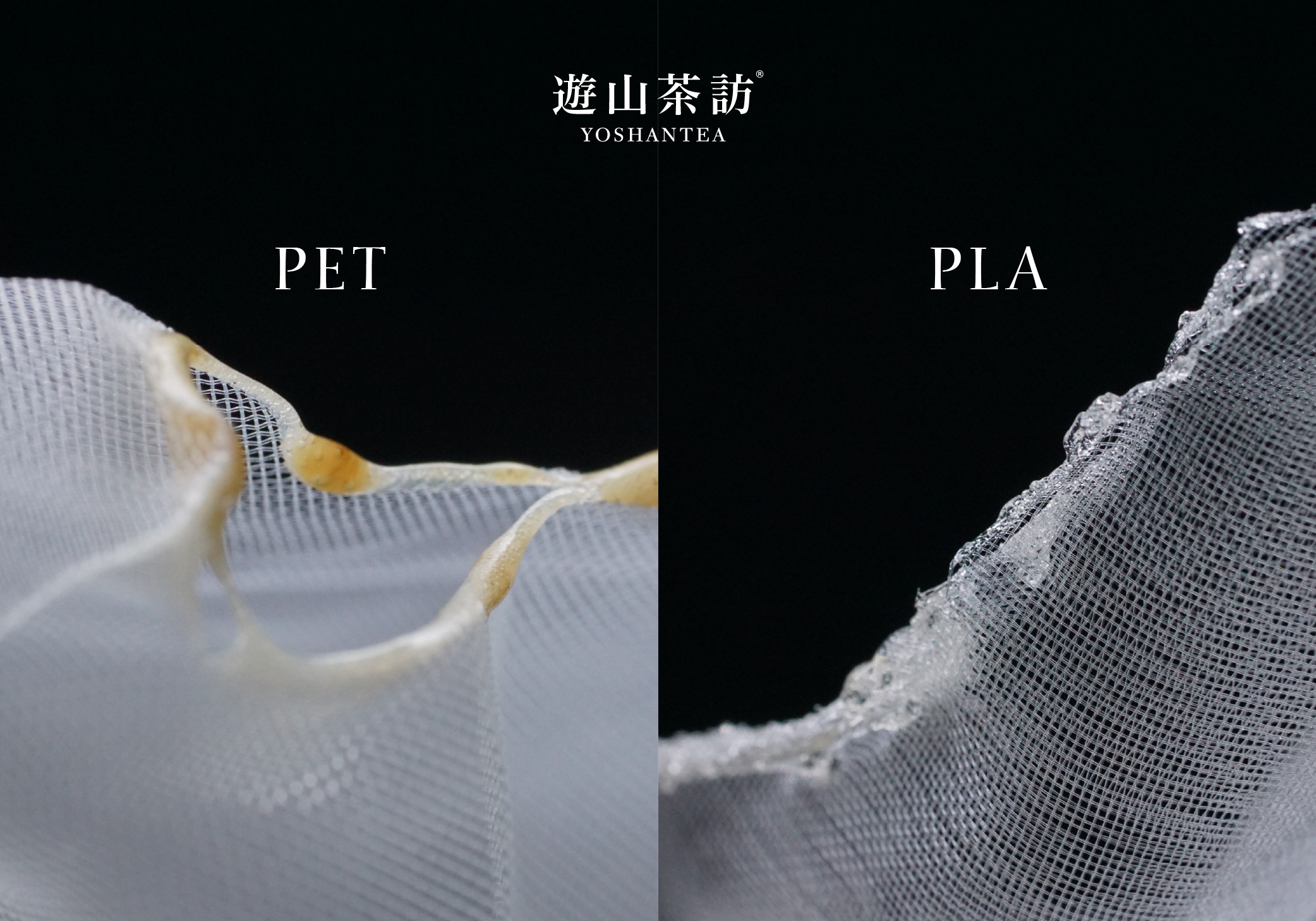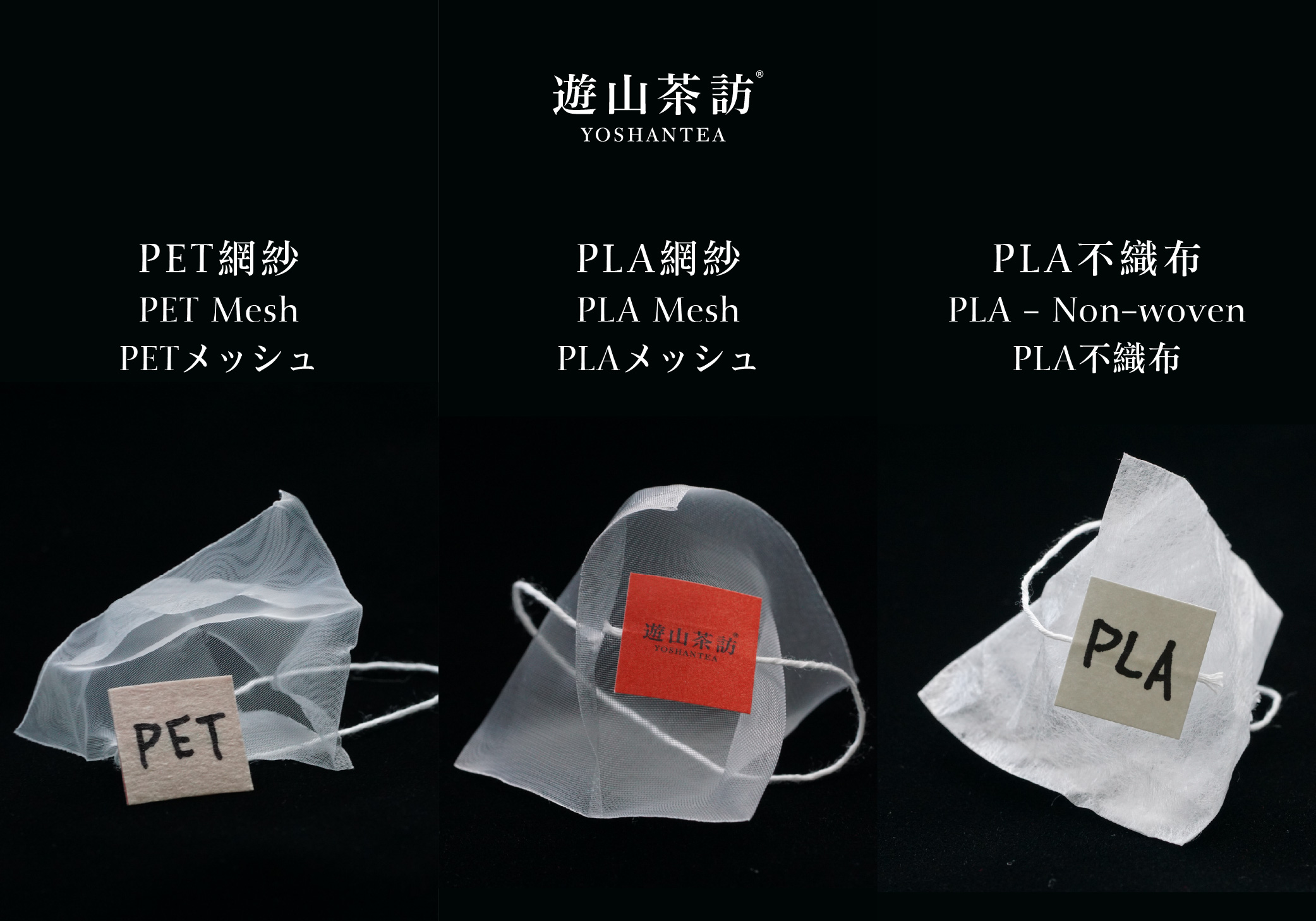Hello everyone,
I’m Andy, a tea enthusiast.
With the rise of environmental awareness, the material of tea bags has become an important topic.
The most common tea bag materials on the market are PET (Polyethylene Terephthalate) and PLA (Polylactic Acid).
Although they look similar, they differ significantly in origin, properties, and waste management.
What is a PET Tea Bag?
PET is derived from petrochemical resources, refined from petroleum.
It has strong heat resistance, durability, and shape stability, making it widely used in beverage bottles, food packaging, and tea bag filters.
The main advantage of PET tea bags is that they are tough and durable, less likely to break during brewing.
However, PET is non-biodegradable, and the issue of plastic micro-particles has raised significant concerns.
What is a PLA Tea Bag?
PLA comes from natural resources such as corn starch and sugarcane.
It is a bio-based plastic made by polymerizing lactic acid.
Its key feature is that it can biodegrade in industrial composting environments, making it a more eco-friendly option.
However, PLA requires high temperature and constant humidity conditions in industrial composting facilities to break down effectively.
It does not easily decompose in home composting or natural environments.
How to Tell PET and PLA Tea Bags Apart?
Many people think the material can be identified by appearance, but that is not the case.
Appearance only shows the weaving style (such as mesh or nonwoven), but not the actual material.
Some assume “nonwoven = PLA” and “mesh = PET,” but this is inaccurate.
The simplest method is the burning test:
- PET: After burning, it leaves white, opaque molten plastic particles that char, producing white smoke.
- PLA: Leaves little residue, usually transparent molten particles, without the PET burn pattern.

Mesh vs. Non-woven Tea Bags
- Mesh: Has higher transparency, usually used for whole-leaf teas.
It makes brewing more visually appealing but may cause “tea dust leakage” when used with broken tea leaves.
- Non-woven: The opposite, suitable for broken tea leaves, prevents tea dust from floating in the cup, but hides the tea leaves’ appearance.
Neither is inherently better. The best choice is the material that brings out the tea leaves’ quality.
Tea Bags and PPWR (Packaging and Packaging Waste Regulation)
On February 11, 2025, the EU enacted Regulation (EU) 2025/40 on Packaging and Packaging Waste (PPWR), which will gradually replace Directive 94/62/EC.
Tea bags are specifically classified under PPWR as “products difficult to separate from their contents,” meaning they are encouraged to use compostable materials such as PLA.
However, this “compostable” definition refers to industrial composting, not home composting.
According to PPWR or EN 13432 standards, “industrial compostable” means that the material must decompose at least 90% into particles smaller than 2 mm within 180 days at 58°C ± 2°C, and the final compost must not harm plant growth or soil health.
Final Thoughts
As the tea industry evolves, adopting EU standards as a target can help raise the quality of Taiwanese tea, even if it is not easy to achieve immediately.
Unlike other foods, tea is dry, safe, and not easily perishable, so we should also think about ways to enhance tea quality beyond just taste.
“Good taste” is already the foundation of Taiwanese tea.
That’s all for today. I hope this was helpful. See you next time!
/#yoshantea #taiwantea #dongdingtea #oolongtea #teafacotry #FSSC22000 #safetea #teabagmaterials #PLA #PET #sustainablepackaging #PPWR #ecofriendlytea
